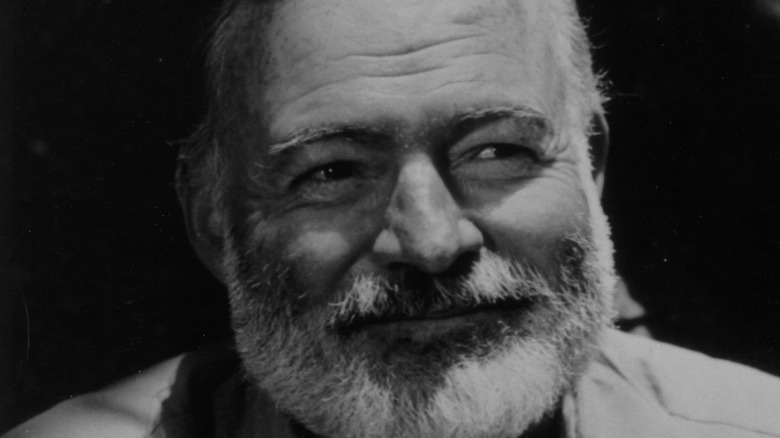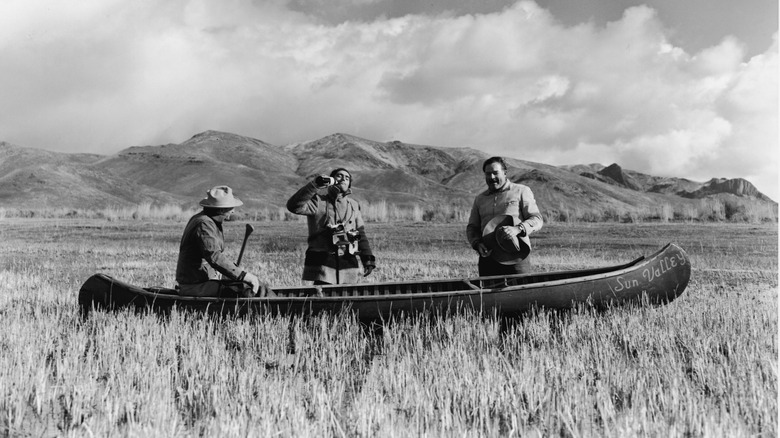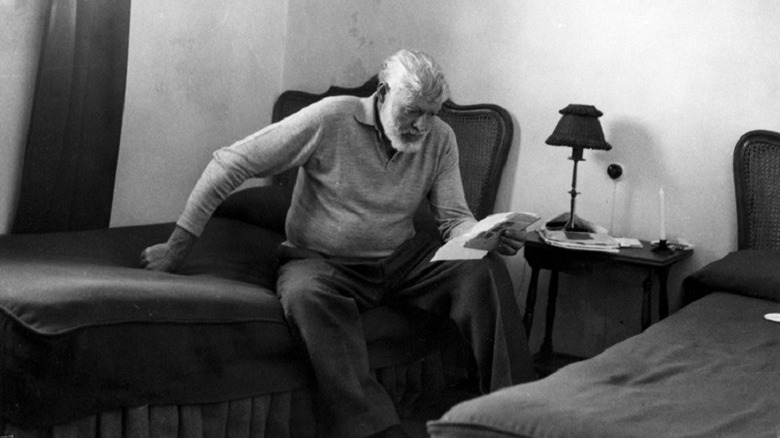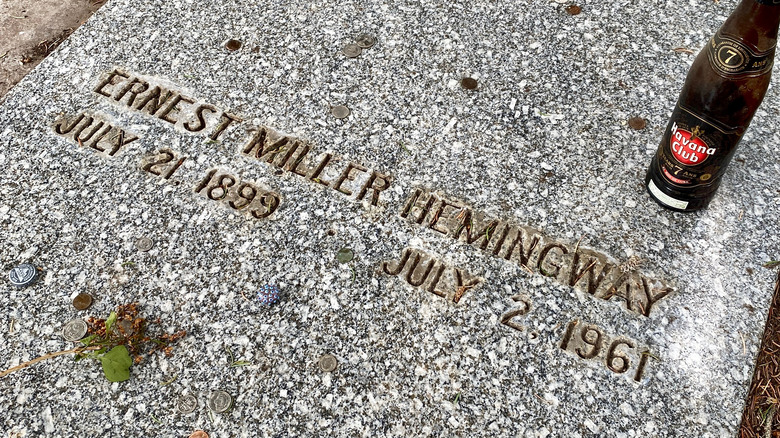Where Is Ernest Hemingway Buried?
Ernest Hemingway was a Nobel Prize winner and is considered one of the greatest novelists of the 20th century. He was born in 1899 in Illinois and lived in the suburbs, but he also spent time in Michigan where his family owned a cabin. Hemingway's interest in writing started at a young age. He was part of his high school's publication wherein he mostly wrote sports pieces (via Biography). After graduating high school at 17 years old, he immediately started work as a journalist for the Kansas City Star.
When World War I started, Hemingway enlisted in the Red Cross and became an ambulance driver in Italy. As noted by the Encyclopedia of World Biography, Hemingway was wounded during his service, and he returned to the U.S. at 20 years old. He decided to go back to his writing career after recuperating from his injuries. He worked as a foreign correspondent, but he wanted to pursue fiction writing. His first book titled "Three Stories and Ten Poems" was published in 1923, and his first novel — and some say his greatest work — titled "The Sun Also Rises" was published two years after.
Ernest Hemingway's years in Idaho
Throughout his life, Ernest Hemingway (pictured right) spent time in different places including Italy, Spain, Paris, Africa, and Cuba, but his final years were spent in Idaho. Businessman Averell Harriman built the Sun Valley Lodge in Idaho and invited well-known personalities, including Hemingway, as a marketing tactic (via Ernest Hemingway Collection). Visitors were treated to free lodging in exchange for promoting the new business, and Hemingway enjoyed his stay, so much so that he returned to Idaho many times throughout the years.
According to Only in Your State, Hemingway stayed in Room 206 of the lodge and made it his temporary home. In 1959, however, he moved into a private property in Ketchum located near the lodge. He was able to enjoy the outdoors and often went hunting, bird watching, and fishing at Silver Creek. He was also a regular in local establishments — such as the Pioneer Saloon and the Sawtooth Club — that are still in operation today.
The final months of his life
For most of his life, Ernest Hemingway was a heavy drinker. As reported by ATI, he suffered from liver damage in his late 30s, and his physicians told him to stop drinking. However, the novelist didn't heed the advice. He reportedly struggled with mental issues as well. In a New York Times article, his fourth wife, Mary, said that she had Hemingway admitted to the Mayo Clinic in November 1960 per the suggestion of psychiatrists. During that time, Hemingway had high blood pressure, but Mary said that the main reason for his hospitalization was his depression. "His real trouble was a serious, very serious breakdown. He was so depressed I cannot even say when he started to feel so depressed," she told the newspaper.
He wasn't doing good physically either. As reported by Art of Manliness, Hemingway had six concussions throughout his life that were untreated. He also survived two plane crashes and was in chronic pain afterward due to the injuries he sustained. He drank alcohol to cope and no longer had the will to write.
If you or someone you know needs help with mental health, please contact the Crisis Text Line by texting HOME to 741741, call the National Alliance on Mental Illness helpline at 1-800-950-NAMI (6264), or visit the National Institute of Mental Health website.
Ernest Hemingway's final resting place
Ernest Hemingway's first stay at the Mayo Clinic in November 1960 lasted for almost two months, and he was discharged on January 23, 1961. Per the New York Times, he was again admitted for two months that same year due to hypertension and hepatitis and was released by the end of June. Just two days after, however, Hemingway died by suicide with a shotgun in his Ketchum, Idaho, home (via ATI). Initially, Mary Hemingway told the media that her husband accidentally died while cleaning his gun, but she later admitted that he had shot himself. "He shot himself. Shot himself. Just that. For a long time, I refused to admit it even to myself, it's true," she told the New York Times in 1966.
Hemingway is buried at the Ketchum Cemetery in Idaho. His grave marker is a simple stone slab that bears his name and years of life, and it doesn't stand out from the rest, which is telling of the kind of man he was. As noted by Only in Your State, fans who visit his grave leave coins, notes, and bottles of alcohol for the literary great.
If you or anyone you know is having suicidal thoughts, please call the National Suicide Prevention Lifeline by dialing 988 or by calling 1-800-273-TALK (8255).



